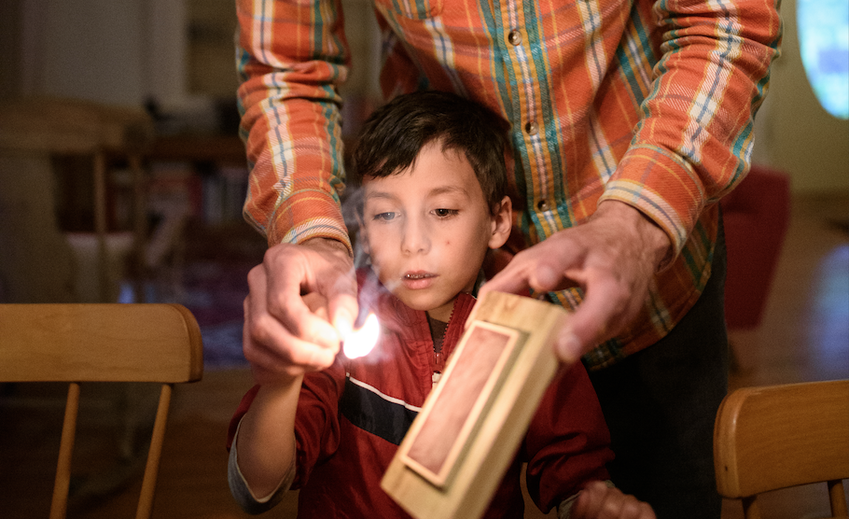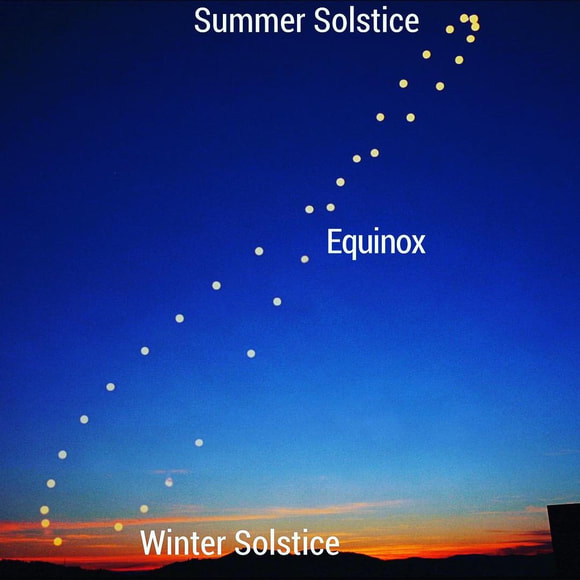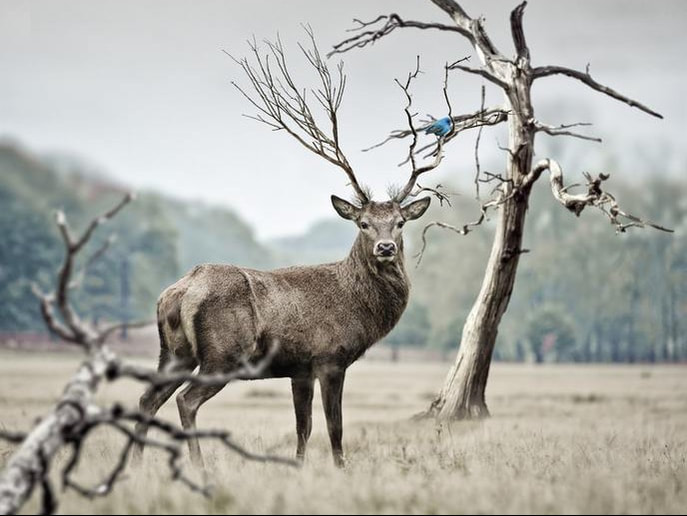 As one year winds down, it is natural to feel the urge to look to the upcoming year. We may crave to move on, move forward, or even reset. Is this merely the effect of a change in calendar years, or is something deeper at play? Like the Moon, the Sun's light waxes and wanes over the course of each year.For half the year, the sun brightens and for the other half, it darkens. At the time of Solstice we are at the extreme end of a cycle. In December, those in the Northern Hemisphere are at the end of the darkening cycle and the beginning of the brightening cycle, and for those in the Southern Hemisphere it is the opposite. This end point of a Sun cycle is a juncture, called a sandhi in Sanskrit, is a powerful transition point. Solstice is a doorway, placing us between two worlds.While January first has no astronomical significance, the solstice is an important astronomical event with real astrological significance. This doorway that begins a new sun cycle, puts us each in a sacred transition point. The Vedic viewpoint is that transitions are full of power, or what is called śakti in Sanskrit. The frenetic energy of a juncture point can induce an inner excitement and even a frenzy. At this juncture, we feel a strong urge to move forward, to get the ball rolling, to run headfirst toward whatever is next. Yet, the Vedic Viewpoint advises against this. Instead, the best way to take advantage of the power of this sandhi is to s l o w down. Take pause. Recollect. Gather yourself. This is a valuable time of contemplation, investigation and inquiry. It is not the time to launch a new endeavor or jump into something. We light candles and lights, ghee lamps or wood stoves. Honoring this contemplative transition between the waning and waxing of the Sun, we take stock. It can be a time to journal, do a gratitude practice or envision a pathway. Take in your past year or six months. Honor the time, sit with a cup of tea and the bubbling up of new ideas and let them steep and seep in. Give yourself the gift of slowing down, abiding, quieting, and waiting. Those inclined toward yoga can take Śavāsana, reclined poses, spinal twists and meditation. To gather objective insight on the past and strategy for the upcoming phase, the Vedic tradition looks to your individual horoscope.Here is a little more on the astronomy and astrology of the Solstice. From Earth’s viewpoint, the Sun appears to draw a figure 8 (Analemma) over the course of 12 months. That 8 is marked by four points - Summer and Winter Solstice on the ends and Spring and Fall Equinox in the center. The figure 8 is created by the Sun appearing to move for half the year in a northern direction (Uttarāyaṇa), and for the other half of the year, in a southern direction (Dakṣiṇāyana). Solstice is the transition between these two directions. In the northern hemisphere, we see the end of the southern directional movement and the beginning of the northern pathway. You can see in the image above, the solstice marks the turning of a corner. Like a runner on a track, who sprints the straights and slows down on the curves, we are called to slow down at the solstice. Steep, seep, slow down, abide, review. Gather yourself for the sprint that is to come. Each Solstice is unique given the placements of the other planets, including the moon.This Solstice (2018) occurs in a lunar month ruled by the Nakṣatra {constellation, or lunar mansion} known as Mṛgaśīrṣa*. This constellation is associated with inquiry, searching and unearthing. Mṛgaśīrṣa is the deer - the one who creates trails - and a full moon in this position can emphasize and exaggerate the impulse to plan a new pathway or trail for yourself. In one regard, the Moon in Mṛgaśīrṣa impels us to want to change course, to run, to blaze a trail. But this constellation is also ruled by the deity, Soma. Soma is the nectar of rejuvenation, and is associated with slowing down, gathering inner reserves, rejuvenating and re-juicing. Given the power point of solstice, the wise will make use of this time. During this solstice phase, lean into Mṛgaśīrṣa’s capacity for research and inquiry rather than taking action quite yet. Be like the deer, taking pause to quietly eat plants or gaze ahead, gathering peace and nourishment for the trail ahead.A note for the Astrology students: *The Nakṣatras are 27 lunar segments along the ecliptic (the perceived path of the Sun that all planets follow as well) and the full moon and lunar month is based on the Moon’s Nakṣatra location at at the start of the full moon phase - called the 30th tithi (new moon is the 15th tithi, based on pūrṇimānta-full moon ending, calculation) - not based on the minute of the fullest moon. This full moon was in Mṛgaśīrṣa at the start of, and nearly the whole duration of the 30th tithi. It happens that this particular full moon moved about two minutes before the end of the 15th tithi, from Mṛgaśīrṣa to Ārdrā. Some Vedic Astrologers are claiming the full moon to be in Ārdrā, by selecting the constellation of the exact minute of the fullest expression of the moon, however this is simply never the way that the Vedic tradition does this. The full moon of this Solstice was indeed, Mṛgaśīrṣa, the deer. The exact minute of the full moon is actually the very end of the full moon phase. Thus, this month’s start to the *waning* phase is ruled by Ārdrā.
5 Comments
12/29/2018 08:54:02 am
Nancy, you are so welcome! Feel free to share. More to come!
Reply
Lois? Kubota
1/7/2019 08:39:30 am
Love this Michael. Thank you so much!
Reply
Gelsey
12/21/2019 09:22:02 am
So if I’m to understand this correctly, we can use this time to first reflect, revel in the past “sprint” and then to quietly, and with contemplation, dream into the future sprint, the spirit, themes, feeling of that future sprint, without getting into the nitty-gritty of planning or taking action. The dreaming into the future is appropriate but leaping into action is not.
Reply
Leave a Reply. |
AuthorA series of questions about Jyotish from clients and students, posed by a yoga teacher, answered by Michael Archives
April 2022
Categories |


 RSS Feed
RSS Feed